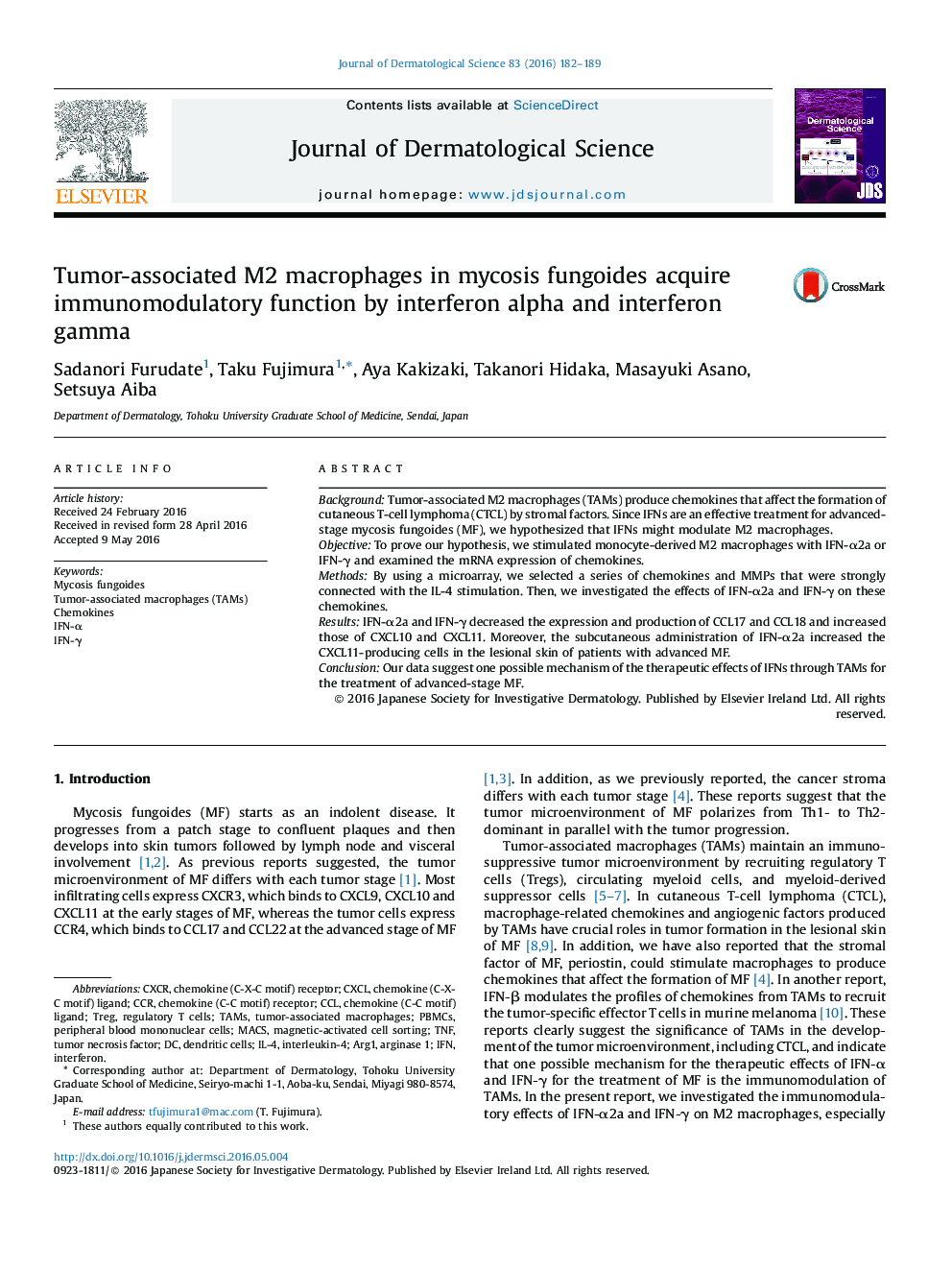| Article ID | Journal | Published Year | Pages | File Type |
|---|---|---|---|---|
| 3212452 | Journal of Dermatological Science | 2016 | 8 Pages |
•We previously reported that the TAMs stimulated by stromal factors produce the chemokines that affect the formation of CTCL.•In this report, we investigated the immunomodulatory effects of IFN-a and IFN-g on M2 macrophages by performing DNA microarray analysis.•Our data suggested one of the possible mechanisms of the therapeutic effects of IFN-a and IFN-g through TAMs for the treatment of advanced-stage MF.
BackgroundTumor-associated M2 macrophages (TAMs) produce chemokines that affect the formation of cutaneous T-cell lymphoma (CTCL) by stromal factors. Since IFNs are an effective treatment for advanced-stage mycosis fungoides (MF), we hypothesized that IFNs might modulate M2 macrophages.ObjectiveTo prove our hypothesis, we stimulated monocyte-derived M2 macrophages with IFN-α2a or IFN-γ and examined the mRNA expression of chemokines.MethodsBy using a microarray, we selected a series of chemokines and MMPs that were strongly connected with the IL-4 stimulation. Then, we investigated the effects of IFN-α2a and IFN-γ on these chemokines.ResultsIFN-α2a and IFN-γ decreased the expression and production of CCL17 and CCL18 and increased those of CXCL10 and CXCL11. Moreover, the subcutaneous administration of IFN-α2a increased the CXCL11-producing cells in the lesional skin of patients with advanced MF.ConclusionOur data suggest one possible mechanism of the therapeutic effects of IFNs through TAMs for the treatment of advanced-stage MF.
